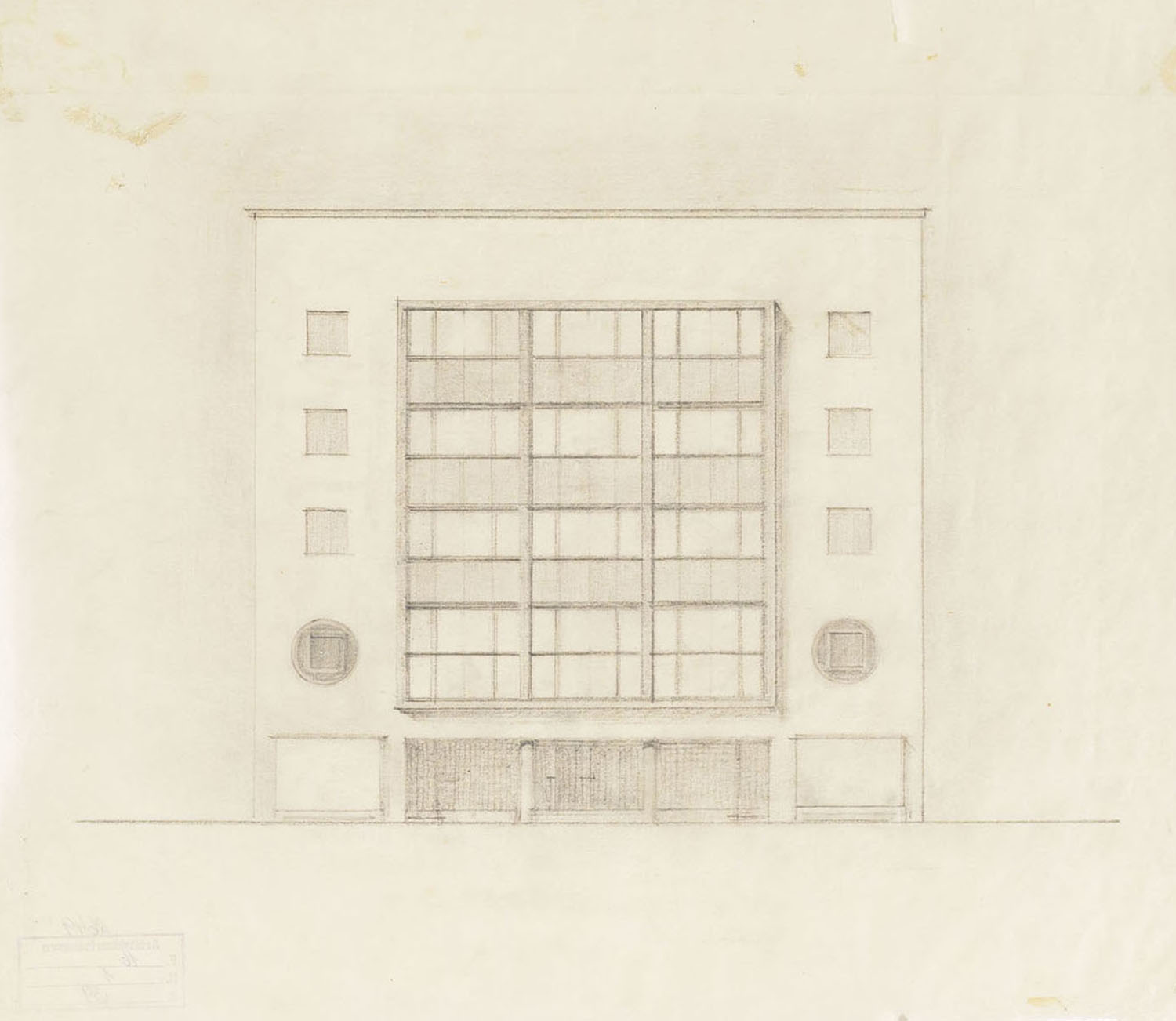Sketches of the facade of the Tallinn Art Hall

Anton Soans, Edgar Johan Kuusik, 1932-1933. EAM 16.1.39
Designed by architects Anton Soans and Edgar Johan Kuusik, the Tallinn Art Hall is one of the most outstanding examples of functionalism in Estonia. In order to find the most suitable facade design, the architects sketched different solutions – the drawings show different designs for the entrance to the building, the arrangement of windows and the details on the facade. The facade solution of the building also changed slightly during the construction works, when the initially planned round windows were replaced with vertical niches. The cornerstone of the Tallinn Art Hall was laid on August 29, 1933, and it was officially opened with an art exhibition on September 15, 1934. The modernity of the originally five-storey building with a T-shaped ground plan is emphasized by the main entrance of the building that is stepping back from the street line and the central part of the front facade that is resting on two pillars, as well as the flat roof of the building. The glass screen located in the middle of the facade, as if placed inside a frame, connects the artists’ studios, office spaces and exhibition hall located on different floors on the facade into one. In 1937, the bronze figures “Work” and “Beauty” designed by the sculptor Juhan Raudsepp were placed in the niches of the facade. According to the project of Edgar Johan Kuusik, the last floor of the Art Building was rebuilt in 1962, as a result of which the building became as high as the adjacent Art Foundation building (architect Alar Kotli). In 1993, Ado Soans, son of Anton Soans, donated the facade drawings to the museum. Text: Anna-Liiza Izbaš
(klick on the picture to see more illustrations)



